Scheming
In the mere three decades since its opening, Walt Disney World in Florida had become a true international destination comprised of four theme parks, two water parks, a downtown shopping district, and nearly two dozen resort hotels.
Image: Disney
Meanwhile, Walt’s original park back in Anaheim was still a single theme park, a parking lot, and a hotel across the street. Then-CEO Michael Eisner had a plan to change that. He wanted to grow the miniscule Disneyland into a resort in its own right, and knew that a second theme park was the way to do it. Suffice it to say that the plans developed for the property during the ‘90s included the gargantuan Westcot, which met the ire of locals and ballooned to a budget well exceeding Eisner’s allowable expenses.
Westcot wouldn’t be. Instead, Eisner and his executives flew off to an Aspen retreat to determine a more cost-effective plan for a second gate at Disneyland. Eventually, they decided that Disneyland could never trump Disney World for one simple reason: Disney World was a destination unto itself – the reason most visitors found themselves landing at Orlando International Airport. But Disneyland was merely one of the hundred thousand things worth seeing in California thanks to that damnable car.
A trip to Disneyland was usually just a part of a larger trip to the Golden State, which offered seaside piers, the international city of Los Angeles, the wonders of Hollywood, the High Sierras… in California, you could ski in the morning and surf in the afternoon! Disneyland could never compete with all the wonders of California…!
Or could it?
Image: Disney
It hit like lightning: the way to keep guests from leaving Disneyland to see California was to bring the rest of California to Disneyland.
Disney’s California Misadventure
At the dawn of the new millennium, Disneyland was renamed Disneyland Park – part of the larger Disneyland Resort that would also include the Downtown Disney District (a downsized version of the shopping area that had debuted at Disney World decades earlier, more snugly fit within the still-small resort). As well, Disney acquired the Pan-Pacific Hotel just west of the new shopping area (renaming it Disney’s Pacific Hotel, then Disney’s Paradise Pier Hotel), constructed a new deluxe resort (Disney’s Grand Californian Hotel and Spa), and – oh, yeah – opened a new theme park.
Image: Disney
Disney’s California Adventure debuted in February 2001 with warnings spread far and wide that the new, cutting edge park would likely draw bumper-to-bumper traffic to the freshly-poured Mickey & Friends parking garage; that California Adventure would max out at its 33,000 guest capacity on most weekends; that the old Disneyland next door would practically be a ghost town as new international guests descended on the bright, shiny, new park.
The reality was a little different.
In 2001 – California Adventure's worldwide debut year – about 5 million guests stepped through its gates.
That doesn't sound bad at all, until you know that during the same period, more than 12 million visited that "old-fashioned" and "tired" Disneyland.
But why? The answer to that question is its own in-depth feature here – one of the most-read on Theme Park Tourist, and a favorite for theme park industry fans, Declassified Disaster: Disney’s California Adventure. But the short version is that California Adventure tried to be the opposite of Disneyland.
Image: Disney
Disneyland’s strength has always been that its themed lands feel transportive; that guests are stepping into a long-since-forgotten time; Adventureland, Frontierland, New Orleans Square, Fantasyland… they all feel like real worlds that could’ve existed, but are now brought to life in their idealized, romanticized, “perfected” form; habitable, historic, and real, but infused with just enough fantasy as to be impossible.
And that’s where California Adventure could’ve really shined! After all, who but Disney could make guests feel that they’ve stepped back into the Golden Age of Hollywood, mingling among the stars and cars of Tinseltown? Couldn’t Disney take guests to a turn-of-the-century Victorian-era Californian boardwalk lit by warm-glowing strings of the new incandescent Edison bulb? Disney’s portfolio tells us that they could create an entire land that lets guests explore an idealized 1920s Los Angeles, alive with the ding of the Red Car electric trolley as it glides down the street.
Image: Disney
Instead, California Adventure’s lands were play-ups of modern California. The time is now; the place is here. Instead of transporting you back in time as only Disney can, the park's Hollywood Pictures Backlot land is supposed to be a modern Hollywood set… of Hollywood. It may seem like you're on modern Hollywood Blvd. lined with punny plastic surgeon shops, hair salons, and casting couches, until you notice that the shops are merely plywood facades with scaffolds and camera rigs all around! The same goes for a ‘70s inspired pier of stucco and neon with off-the-shelf unthemed carnival rides; corrugated-steel industrial gift shops and concrete plazas.
Image: Disney
Maybe that would’ve been excusable if it had still given guests phenomenal things to do, but the relatively few people who gave California Adventure a chance reported that it contained only three noteworthy rides –two standouts (California Screamin' – a bare steel roller coaster – and the Lost Legend: Soarin’ Over California) and one of the most abysmal rides Disney has ever created, the park’s only dark ride and subject of a Declassified Disaster: Superstar Limo.
Given that California Adventure’s already-low attendance dropped a further 15% in its second year, executives had to realize that this problem was not going away. They quickly tried super-charging the park with brand new attractions like the family-focused A Bug’s Land and the headlining E-Ticket Lost Legend: The Twilight Zone Tower of Terror. But behind the scenes, Imagineers were toying with a big fix to bring something new to the Californian park… an entirely new land that would celebrate California’s mid-century car culture – a whole land dedicated to cars. No, not Cars. Cars.
Carland
Though it may be hard to believe, Disney Imagineers were hard at word developing an entirely new themed land to be built on a last bit of parking lot remaining south of the California Adventure site.
Now, Disney had erected tributes to California car culture before, like the massive “roadside attraction” style Gertie the Dinosaur stand resting in Echo Lake at the Disney-MGM Studios. California Adventure’s own Paradise Pier also featured a section seemingly dedicated to the sometimes-whacky wonders of the great American road trip, including a sunglasses shop inside a dinosaur of its own.
But of course, the history of America’s roadside attractions and their connection to that great American pastime of the family vacation was nearly endless. After all, Disneyland had been one of those tourist traps forty years earlier, back when Cadillacs and station wagons criss-crossed the country.
Image: Disney
In particular, Disney’s Carland would celebrate the Mother Road itself – Route 66. Originally running from Chicago, Illinois to the Pacific Coast Highway in Santa Monica, California, the legendary “Main Street of America” was 2,448 miles of opportunity – a “yellow brick road” to the West for those who headed to the coast during the Dust Bowl of the 1930s. Route 66’s story is forever tied to the many communities that resided along its path, who fought to save their towns from being bypassed by Eisenhower’s Interstates.
Naturally, the land would highlight an imaginary Route 66 town brought to life with mid-century music, “drive-in” diners, and kitschy shops selling souvenirs and tchotchkes. Bringing to life a neon stretch of "Cruise Street" between 1955 and 1965, Carland would've been like stepping into a '60s diner and being teleported into the past. It would also feature at least one new headlining ride.
Image: Disney
From what fans can gather, the main attraction in the land would’ve been Road Trip U.S.A. On board, guests would drive along a comical, post-card perspective Route 66 passing preposterous roadside attractions set in the desert mountains that enveloped the town.
Image: Disney
Chugging along highway ramps, rumbling over bridges, and swerving through the natural and manmade wonders of the West, Road Trip U.S.A. would’ve likely been a new take on Autopia; a drive-‘em-yourself family ride through the west to the tune of the Beach Boys, the Mamas and the Papas, and the road trip-ready playlists of the era.
Image: Disney
Of course, they'd also sputter through a car wash, where onlooking guests could activate wind and water effects.
Image: Disney
One particularly thoughtful moment would come when the cars would drive into the "Carland Caverns" set inside of the rocky backdrop to the land to explore glistening caverns clearly modeled after the Mine Train Thru Nature’s Wonderland that once chugged through Frontierland, with its iconic and beloved Rainbow Caverns scene.
As development of Carland progressed, it seems that Imagineers decided that, for the land to truly revitalize Disney's California Adventure, its headliner would need to be a real draw. That seems to be why, later on in the land's concept phase, the Autopia-style drive through exaggerated comic roadside attractions was reduced in scope and given a character overlay (since, if you can believe it, back then people criticized California Adventure for not having enough Disney characters – quite the opposite of today) to become...
Image: Disney
Goofy About Roadtrips, now casting the ride as a complement to 1995's A Goofy Movie.
That seems to be the point when the land's anchoring ride became a full-on E-Ticket, bringing TEST TRACK's technology to Anaheim in a new racing ride through the desert...
Image: Disney
Looking more familiar?
Of course, Carland never came to be. At least, not in the form Imagineers originally envisioned… Why? We'll dissect three major points that shifted the land's focus forever on the next page, then head into California Adventure's one-of-a-kind E-Ticket land to step aboard its anchoring attraction...
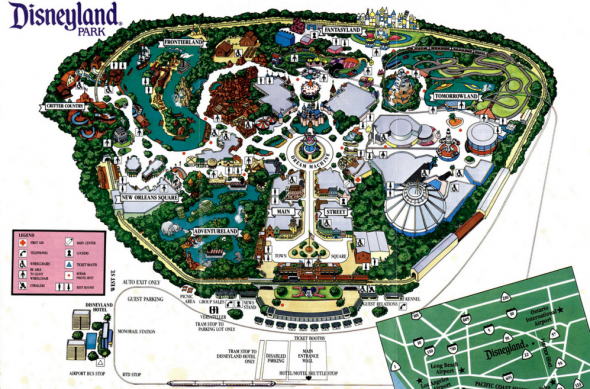
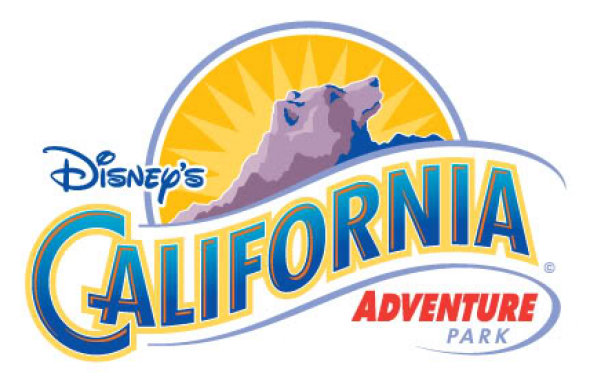
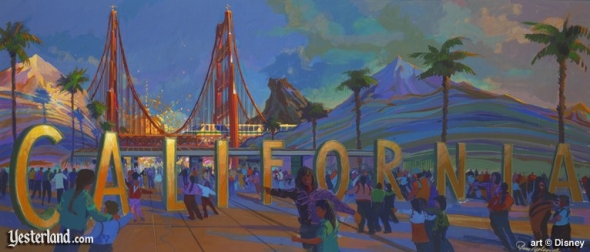
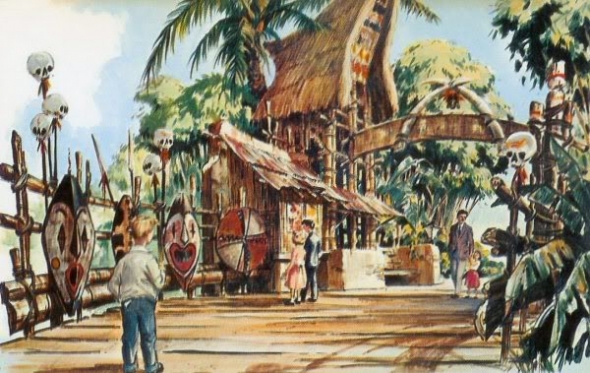

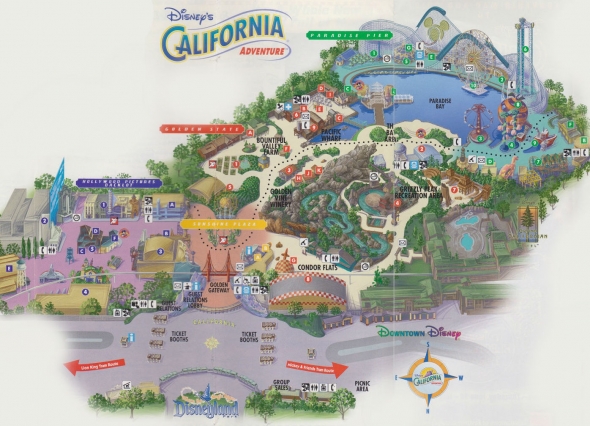
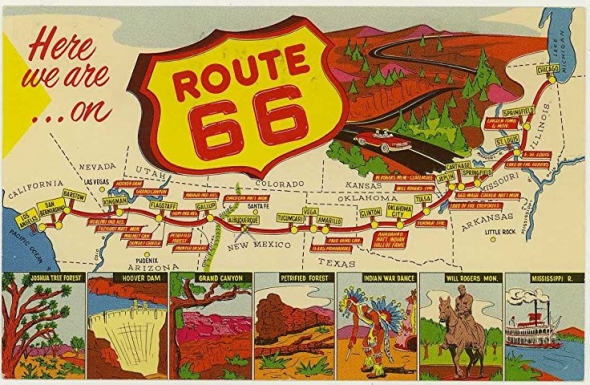
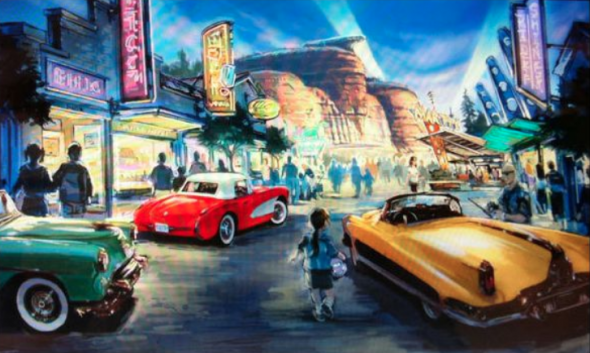
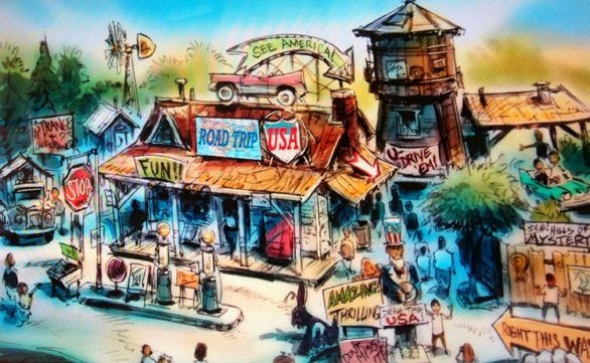
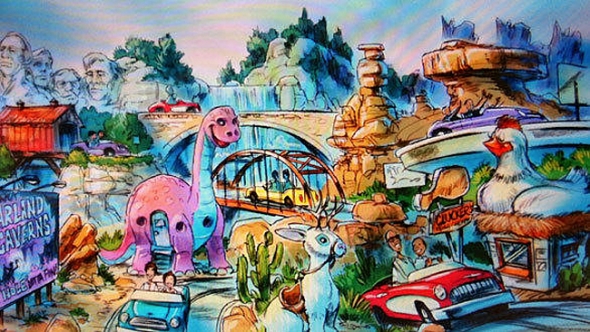
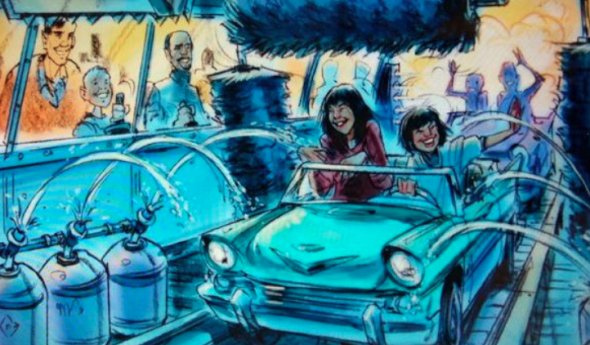
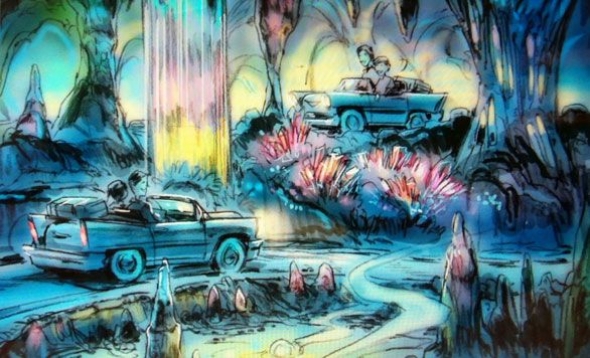
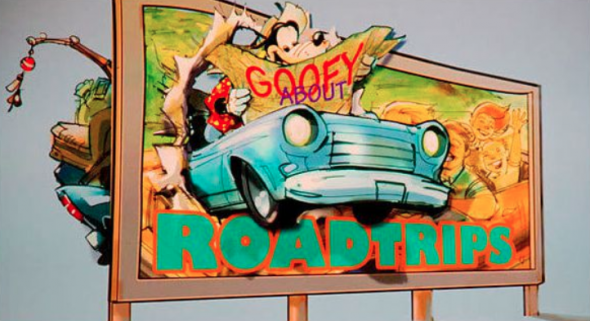
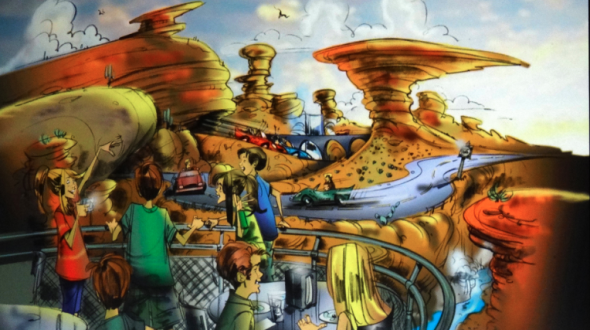

Add new comment